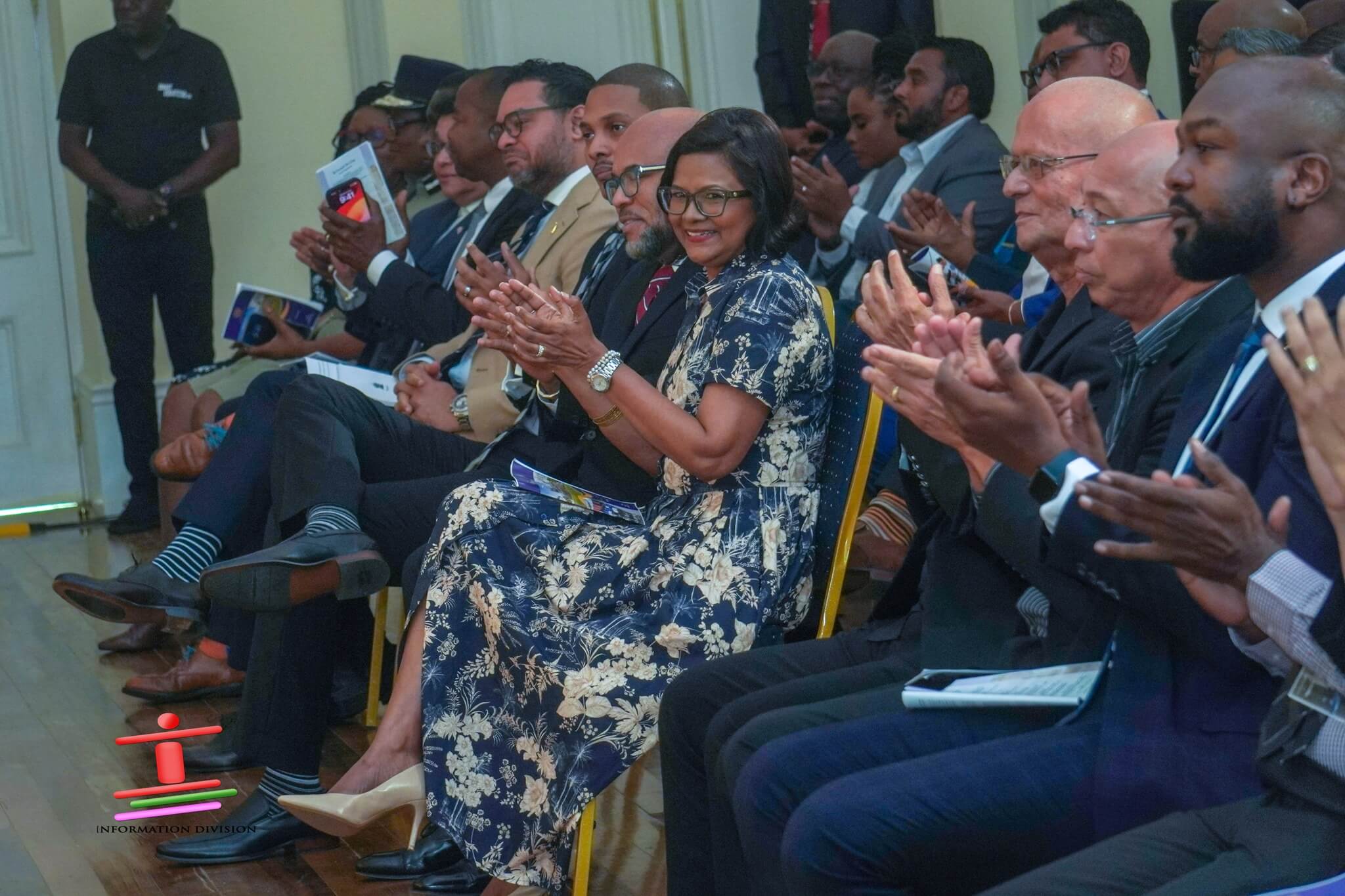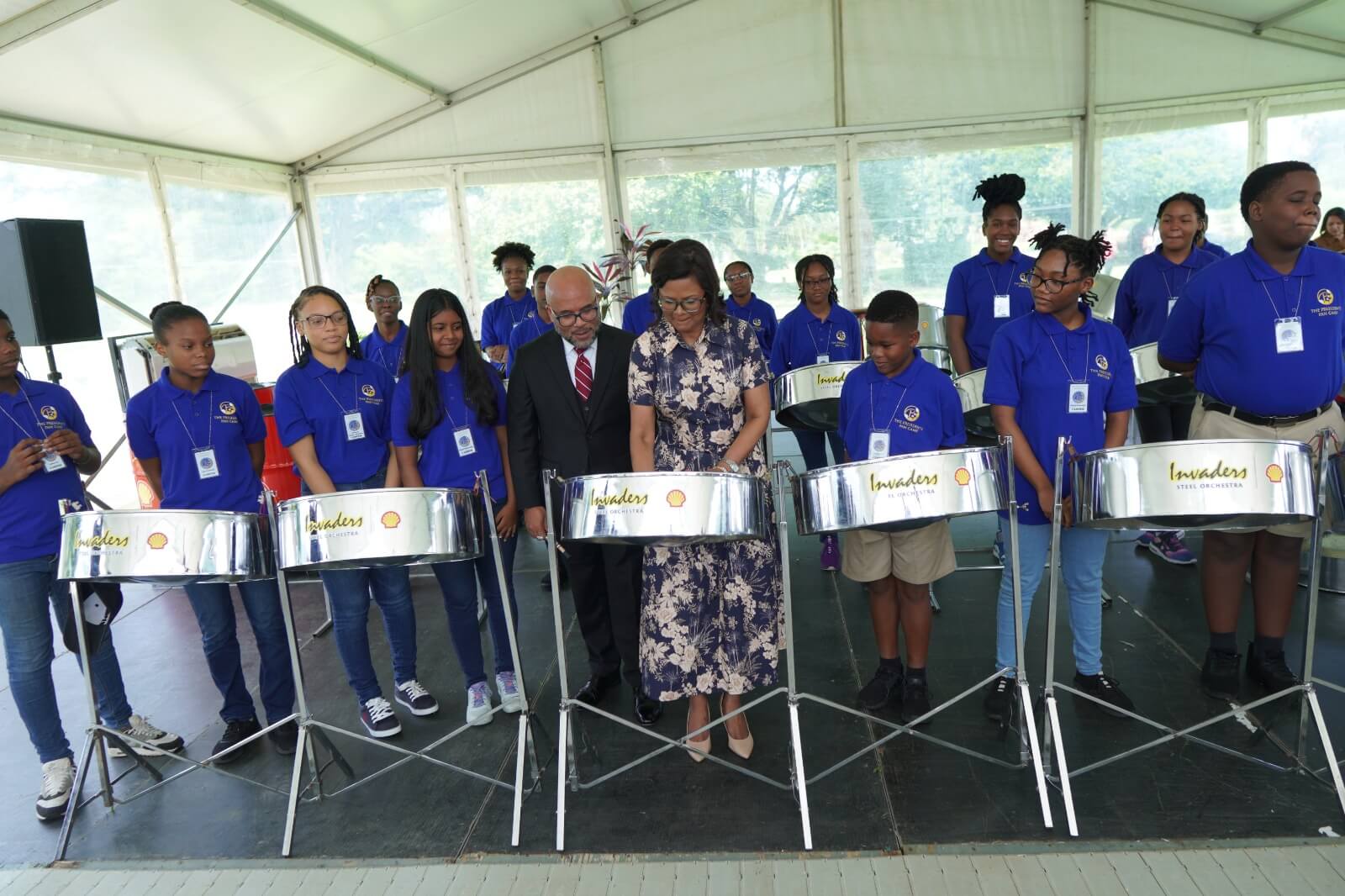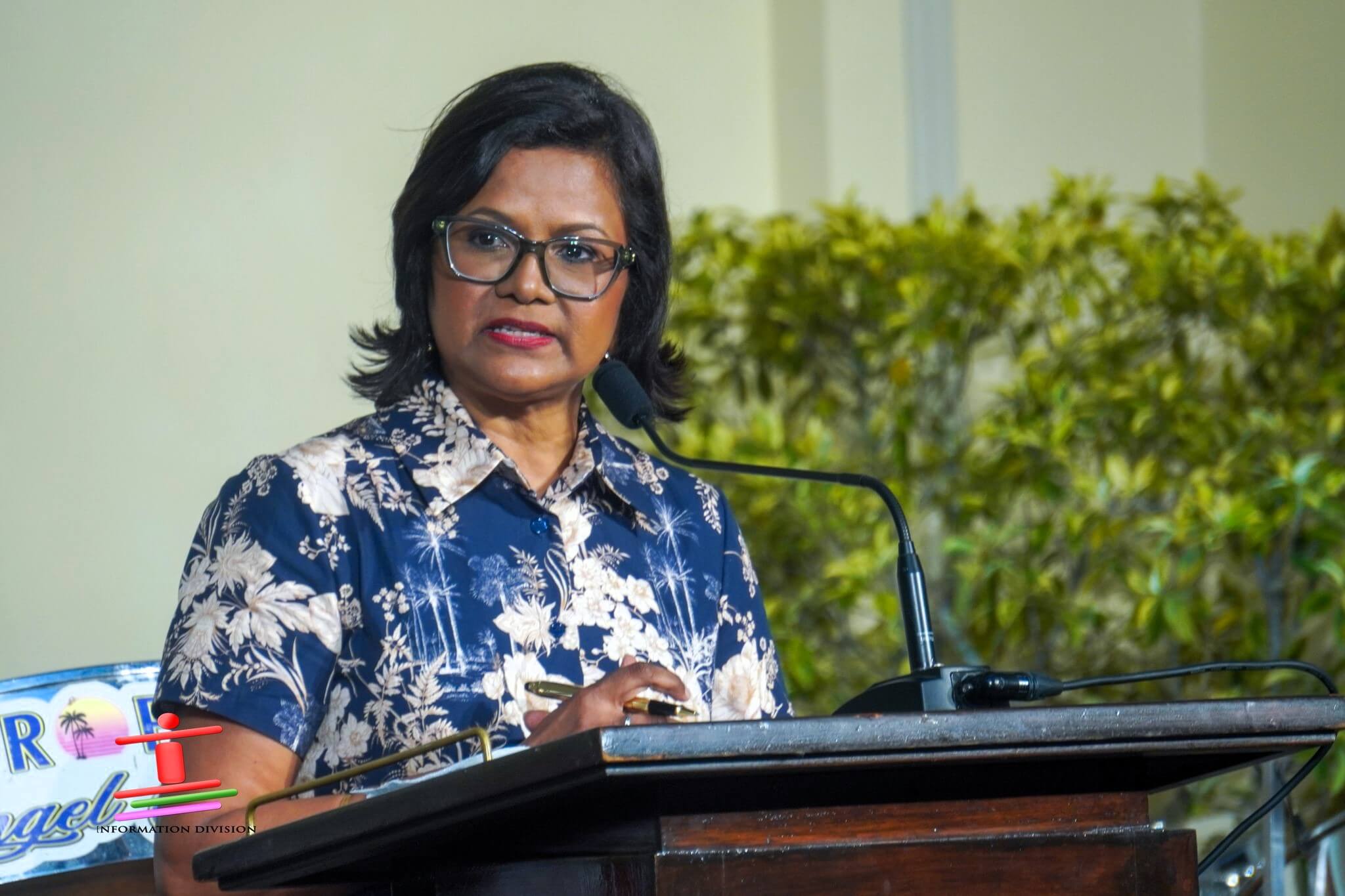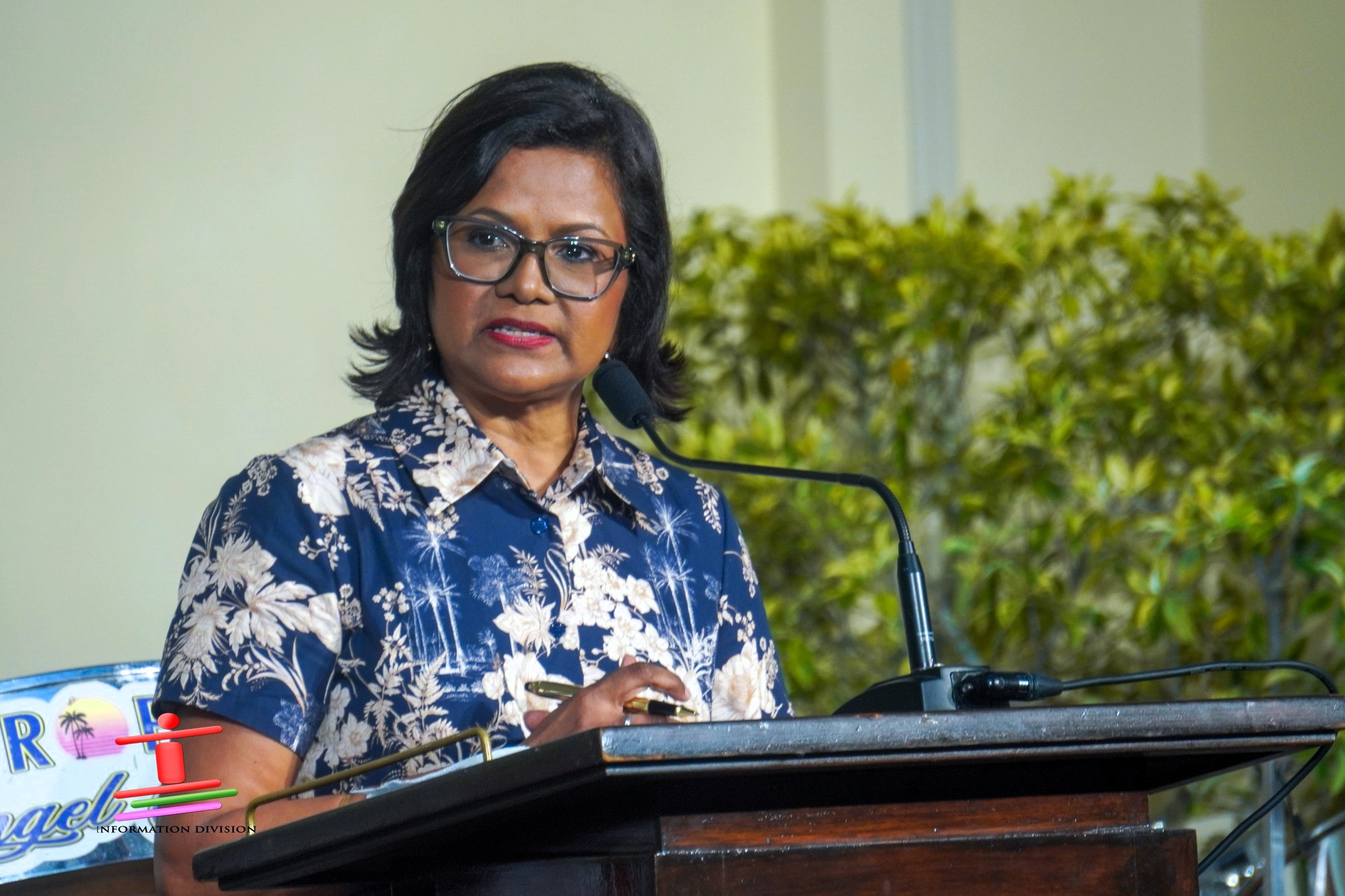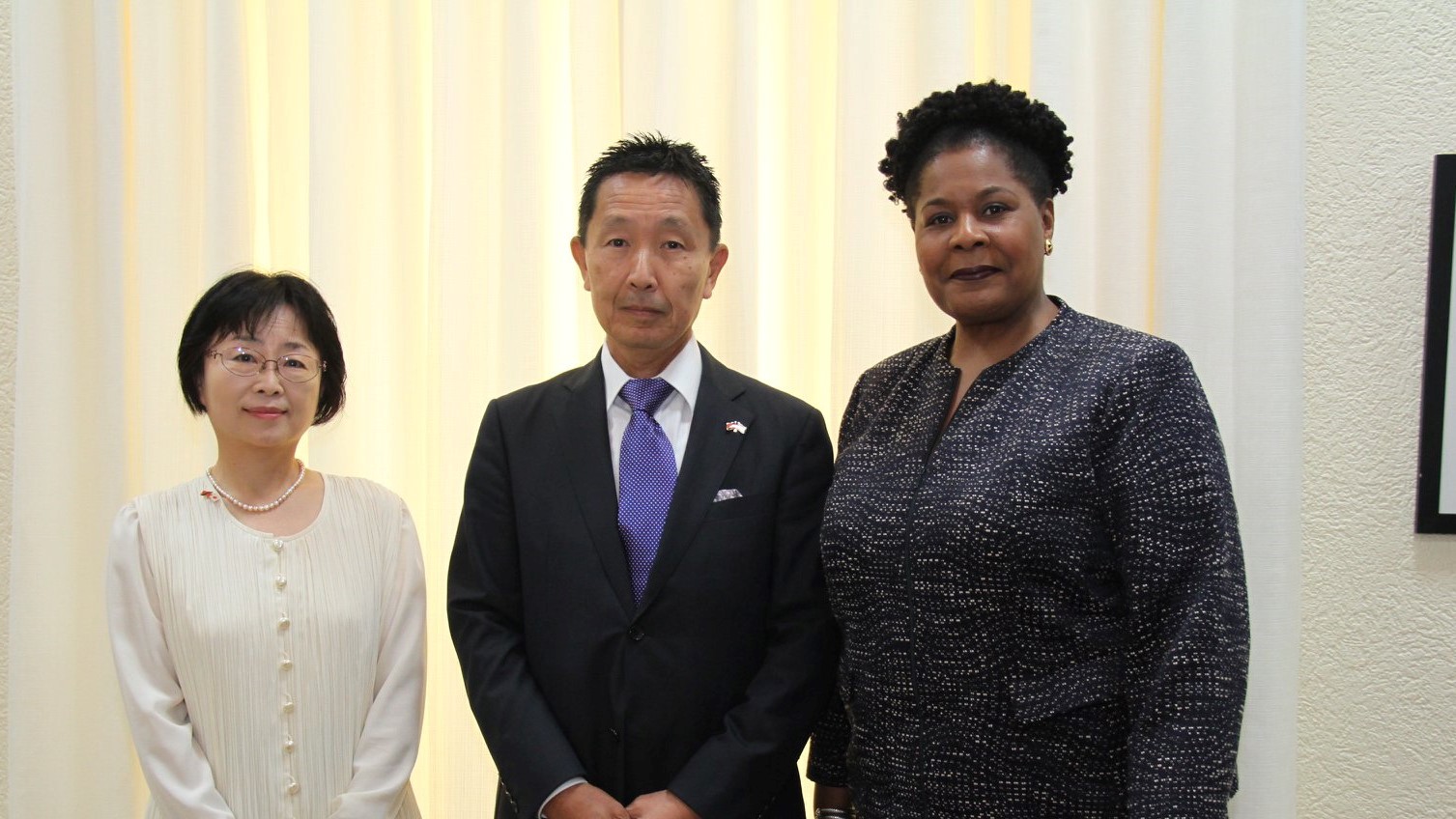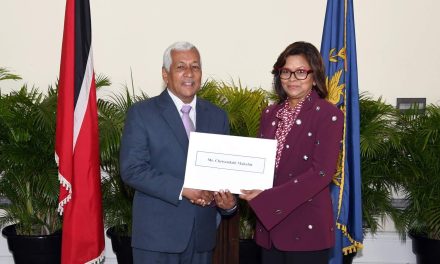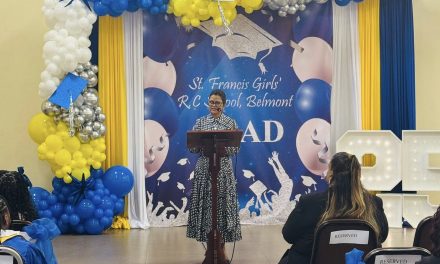Good morning.
Today’s event gives me cause, not just for tremendous happiness, but also for tremendous hope. It is the culmination of months of hard work, by committed and gifted citizens, who have all pulled together to make a vision a reality. That vision is the vision that I shared during my address on the occasion of my inauguration last year, of using the Office of President to advocate for the adoption in our communities of youth programmes based on the panyard model – not just limited to specific periods in the year, but on a year-round basis. I am tremendously happy this morning because today, with the help, as I say, of committed and gifted citizens, the panyard model has come to President’s House.
I want to say something about the committed and gifted citizens who have worked so hard with His Excellency and me over the past few months to make that vision a reality. They are men and women – the educators; the mentors; the planners; the thinkers; and the dreamers – who have all given of their time and of their talent, voluntarily. You will see their names printed in the Programme. These men and women have asked for no reward. They have sacrificed without a thought for remuneration. They are the kind of men and women of whom our country needs to be proud. Men and women like those who have helped bring the panyard model to President’s House, show us a different view of ourselves when we look in the mirror. They show us that we are a bright and generous and talented and a good and an able people.
Our country needs, now more than ever, to see a different view of ourselves when we look in the mirror. This morning, Trinidad and Tobago woke up to the news that there were 14 murders – with some media houses reporting as many as 15 – over the weekend. In the teeth of such unspeakable atrocity, the panyard model affords us a different reflection of ourselves. It shows us one pathway out of the darkness. If there is a feeling of hopelessness in Trinidad and Tobago at this time, the panyard model offers us a path back to hope.
A little over two (2) weeks ago, that hopelessness was expressed in an editorial in one of our daily newspapers, titled “A society incapable of positive action”. The editorial’s opening words were “There is a sense of helplessness which pervades the society and enfeebles everyone; police, magistrates and judges, Government and its bureaucracy, the cabinet, the Opposition, the Parliament, those business individuals and institutions which have the responsibility to be entrepreneurial, citizens who remain on the sidelines complaining, parents who continue to nurture potential criminals, “toute moon” as cultural icon Holly Betaudier used to say”.
It went on to describe a range of woes and ills that befall us as a people, and to paint a picture of a society in the grip of a moral, political, economic and social decline, from which the reader could be forgiven for thinking there is no hope for escape.
Ladies and Gentlemen, I respectfully beg to differ. Our society is neither incapable of positive action, nor doomed to ruination. So long as it is made up of people like the men and women who came together to help bring the panyard model to President’s House, there is not only hope, but there is complete confidence in our society’s ability to soar above every ill identified in that editorial. The unshakeable truth, of which the men and the women who have helped make today a reality remind us, is that we are far better at making things succeed, than we are at failing at them. Newspaper editorials often do make important points, but the point that today’s event makes is the most important point of all: we are a good and decent people, capable of good and decent things.
I do not disagree that, like all other countries, ours faces moral, political, economic and social challenges. But, our country has what no other country in the world, has. Unlike other countries, ours has the unique advantage of the model of the panyard to enable us to overcome these challenges. I have said that today’s event gives me cause for tremendous hope. That is because the model provided by the steelband movement in its preparations for Panorama – the discipline and the structure that the panyard brings into the lives of young people each year in the lead up to Carnival; the exposure to the transformative and healing power of the music of the steelpan; the wisdom and the life-lessons taught them by their role models; and the composure and self-control that mastery of the instrument require – all of these combine to provide us with one of the most powerful tools for societal change available anywhere in the world.
It seems to me that these are among the things about Trinidad and Tobago and its people, that need to be remembered, especially after a weekend like the one gone by. Models like the panyard model give hope, where we might otherwise despair. I believe that the widespread adoption in our communities of youth programmes based on the panyard model, can bring about the societal change that is required for Trinidad and Tobago to achieve our fullest potential. I believe that the widespread adoption of the panyard model has the potential to be among the most powerful anti-crime measures our country will ever see. And I believe that the men and women who have pulled together to bring the model to President’s House need to be congratulated for having done so, and today I thank them most sincerely for their efforts in this regard.
I said that today’s event gives me cause for tremendous happiness. That happiness is amplified by the fact that, at President’s House, we have been making subtle but significant changes to incorporate the steelpan into our daily operations. One of these changes has been in relation to the Presidential Fanfare. The Fanfare is the short, musical piece that is played at official functions to mark the entrance and the exit of the Head of State. It was composed by Major Edouard Wade, the Director of Music of the Trinidad and Tobago Regiment Band. It was created specifically for the President and it replaced the fanfare that had once been played for the Governor General. It was first played on Republic Day, 1976 as Trinidad and Tobago transitioned from a Colony to a Republic. It has traditionally been played on the trumpet. Earlier this year, that changed. This year, for the very first time, the fanfare was played and recorded solely on the steelpan, played by members of the Defence Force. What you heard as His Excellency and I walked in this morning, was the first public playing of the fanfare solely on the steelpan. That, too, gives me cause for great happiness. We need to incorporate our national instrument into every aspect of our daily lives. Like the title of this year’s Road March reminds us, we need to make the steelpan part of our DNA.
That is why I am so tremendously happy and so tremendously hopeful this morning. Because this morning, the panyard model has come to President’s House. I am hopeful that, when the public sees that it has come here, to President’s House, we will understand and we will know that there are no limits to where the panyard model can go. I am hopeful that, after this week’s Pan Camp, the model will continue spreading throughout the whole of Trinidad and Tobago. And I am hopeful that the model spreads until it becomes part of this country’s DNA.
I say thank you once again to the men and women who have made this week’s Pan Camp possible. And I wish all participants a transformative and an unforgettable experience.
